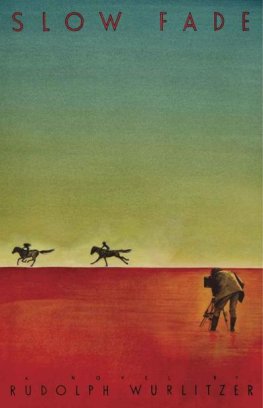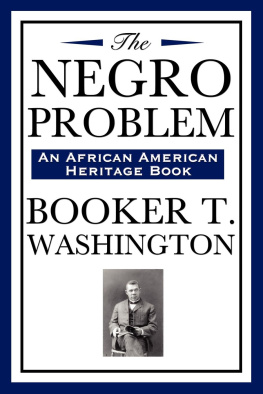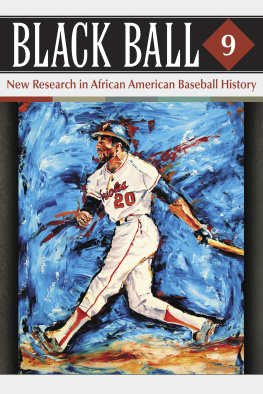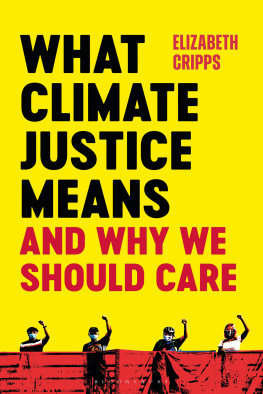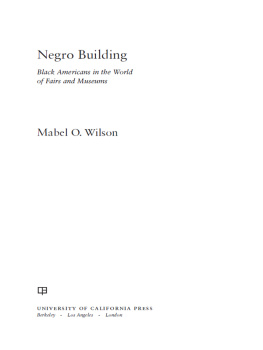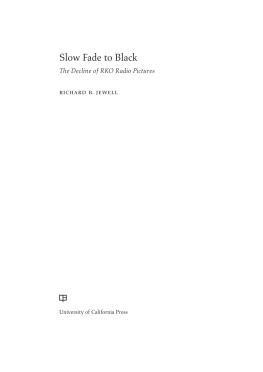Cripps - Slow fade to black the Negro in American film, 1900-1942
Here you can read online Cripps - Slow fade to black the Negro in American film, 1900-1942 full text of the book (entire story) in english for free. Download pdf and epub, get meaning, cover and reviews about this ebook. City: New York, year: 1993, publisher: Oxford University Press, genre: Politics. Description of the work, (preface) as well as reviews are available. Best literature library LitArk.com created for fans of good reading and offers a wide selection of genres:
Romance novel
Science fiction
Adventure
Detective
Science
History
Home and family
Prose
Art
Politics
Computer
Non-fiction
Religion
Business
Children
Humor
Choose a favorite category and find really read worthwhile books. Enjoy immersion in the world of imagination, feel the emotions of the characters or learn something new for yourself, make an fascinating discovery.

Slow fade to black the Negro in American film, 1900-1942: summary, description and annotation
We offer to read an annotation, description, summary or preface (depends on what the author of the book "Slow fade to black the Negro in American film, 1900-1942" wrote himself). If you haven't found the necessary information about the book — write in the comments, we will try to find it.
Cripps: author's other books
Who wrote Slow fade to black the Negro in American film, 1900-1942? Find out the surname, the name of the author of the book and a list of all author's works by series.
Slow fade to black the Negro in American film, 1900-1942 — read online for free the complete book (whole text) full work
Below is the text of the book, divided by pages. System saving the place of the last page read, allows you to conveniently read the book "Slow fade to black the Negro in American film, 1900-1942" online for free, without having to search again every time where you left off. Put a bookmark, and you can go to the page where you finished reading at any time.
Font size:
Interval:
Bookmark:
Slow Fade To Black
The Negro in American Film, 19001942
Thomas Cripps

Oxford University Press
Oxford New York Toronto
Delhi Bombay Calcutta Madras Karachi
Kuala Lumpur Singapore Hong Kong Tokyo
Nairobi Dar es Salaam Cape Town
Melbourne Auckland Madrid
and associated companies in
Berlin Ibadan
Copyright 1993 by Oxford University Press
First published in 1977 by Oxford University Press, Inc.,
200 Madison Avenue, New York, New York 10016
First issued as an Oxford University Press paperback, 1977
Oxford is a registered trademark of Oxford University Press
All rights reserved. No part of this publication may be reproduced,
stored in a retrieval system, or transmitted, in any form or by any means,
electronic, mechanical, photocopying, recording, or otherwise,
without the prior permission of Oxford University Press, Inc.
Library of Congress Cataloging-in-Publication Data
Cripps, Thomas.
Slow fade to black : the Negro in American film, 1900-1942 /
Thomas Cripps.
p. cm.
Originally published: 1977.
Includes bibliographical references and indexes.
ISBN 0-19-502130-4
1. Afro-Americans in motion pictures. 2. Afro-Americans in the
motion picture industry. I. Title.
PN 1995.9.N4C7 1993
791.436520396073dc20 93-6520 CIP
4 6 8 10 9 7 5 3
Printed in the United States of America
To Alma Taliaferro Cripps
Historical facts never speak for themselves, or at least not until the historian has imposed order upon them. Thus there is a constant tension between the fugitive details of history and the historians urge to impose a systematic meaning upon them. On the one hand, as Werner Sombart has said, where there is no theory there can be no history. On the other, Stendahl tells us that the truth may be found only in details. This book, like most works of history, falls somewhere in the middle.
In general the book is a social history and proceeds from two distinct perspectives on the history of American culture and society. First, there would be no need for the book were it not for the peculiar American racial arrangements in which a highly visible yet numerically inferior black group has been customarily, and often legally, ostracized from, exploited by, and occasionally patronized by, a numerically and politically dominant white group. Black history in the American sense, then, is the history of a racial relationship marked by antipathy, antagonistic cooperation, and conflicting loyalties which W. E. B. DuBois once characterized as the twoness of American life.
Second, many of the ideas and strategies in the book stem from concepts proposed by historians and critics of popular culture for whom popular art is an expression of deep seated values and attitudes which may be studied variously as social data, collective myths, and artistic genres. Although this book is about the slow growth of Afro-American impact on motion pictures, the fact that most of it is taken up with a struggle for hegemony over the medium of film precludes the formulation of a theory of black genre film. That, it is to be hoped, will be taken up in a later volume. For the moment, suffice it to say that the discussion is informed by a reading of many students of popular culture, the relationship between audience and filmmaker, and the anthropological bases of communicationamong them Herbert Gans, John Cawelti, Russel B. Nye, Andrew Tudor, Will Wright, and Christian Metz.
These matters of race and popular culture over a period of three-fourths of a century of interaction between black and white filmmakers and their audiences not only have contributed to a unique American cinema but to an understanding of the breadth of American cultural history. As John Kouwenhoven has said in a book on the arts in America which ends with a provocative chapter on architectureStone, Steel, and Jazz: We cannot understand either the limitations or the achievements of [American] civilization if we continue to think of it solely as the product of Western European culture, modified by the geography and climate of the New World. In movies too Afro-Americans affected the medium even though they could not control it; that is what the book is about.
Because this book is taken up so much with the preconditions of strong black interest in movies, the growth of power sufficient to alter movie images, and the growth of a cadre of black film creators its emphasis is broadly social rather than focused on the black film genre that would eventually emerge. I have tried to borrow concepts from scholars whose work emphasizes the breadth of culture such as Basil Willeys The Seventeenth Century Background in which he quotes T. S. Eliot on criticism: In attempting to win full understanding of the poetry of a period you are led to a consideration of subjects which at first sight appear to have little bearing on poetry.
As this manuscript slowly grew into a book two interesting works on black movies appeared. Donald Bogles very personal interpretive history, Toms, Coons, Mulattoes, Mammies & Bucks (New York, 1973), although lacking detailed citations, provides a witty portrait of black actors at work in Hollywood. Daniel J. Leabs From Sambo to Superspade: The Black Experience in Motion Pictures (Boston, 1975) follows the progress, or lack of it, toward positive images of Afro-Americans on the screen. Unfortunately, the timing of the gestation period of the publication of this book prevented me from making use of their ideas.
My earliest inquiry into the subject of this book began more than a dozen years ago. Over the years the staffs of many libraries gave generous assistance, among them the Doheny Library of the University of Southern California; the Special Collections and Theater Arts libraries of the University of California at Los Angeles; the Bancroft Library of the University of California at Berkeley; the libraries of Stanford University; the Library of the Academy of Motion Picture Arts and Sciences in Hollywood; the Feldman Library of the American Film Institute at Greystone, Beverly Hills; the departments of Manuscripts and Iconography of the Wisconsin State Historical Society; the Lamar Library of the University of Texas at Austin; the Ohio Historical Society; the Chicago Historical Society; Butler Library of Columbia University; Mugar Library of Boston University; Beineke Library of Yale University; and Founders Library of Howard University.
Certain libraries provided continuing openhanded service over a period of many years so that I must give special thanks to Jean Blackwell Hutson and Ernest Kaiser of the Schomburg Collection of the New York Public Library; Joel Sullivan of the Manuscript Division of the Library of Congress; William Forshaw and Marian Bell of the Enoch Pratt Free Library of Baltimore; Paul Meyers of the Performing Arts Branch of the New York Public Library; and Walter Fisher, Virginia Richardson, and Florine Williams of Soper Library of Morgan State University.
Patrons of film archives impose a burden upon the repositories far greater than that required for using a book or even a manuscript collection. Each student requires not only personal attention to queries but his research requirements include expensive editing tables and projectors. Nevertheless, film libraries the world over have provided unstinting services for which I am grateful: James Moore of the Motion Picture Section of the National Archives; Dave Chertok of Sherman Grinberg Library; the Fox-Movietone Library; der Staatliches Filmarchiv der Deutschen Demokratischen Republik, Berlin; Erique J. Rebel of Nederlands Filmmuseum; Jacques Ledoux of the Royal Film Archive of Belgium; Per Calum of the Danish Film Museum; Roger Holman and Jeremy Boulton of the National Film Library and the British Film Institute; and Larry Karr and Larry Klein of the American Film Institute.
Next pageFont size:
Interval:
Bookmark:
Similar books «Slow fade to black the Negro in American film, 1900-1942»
Look at similar books to Slow fade to black the Negro in American film, 1900-1942. We have selected literature similar in name and meaning in the hope of providing readers with more options to find new, interesting, not yet read works.
Discussion, reviews of the book Slow fade to black the Negro in American film, 1900-1942 and just readers' own opinions. Leave your comments, write what you think about the work, its meaning or the main characters. Specify what exactly you liked and what you didn't like, and why you think so.

